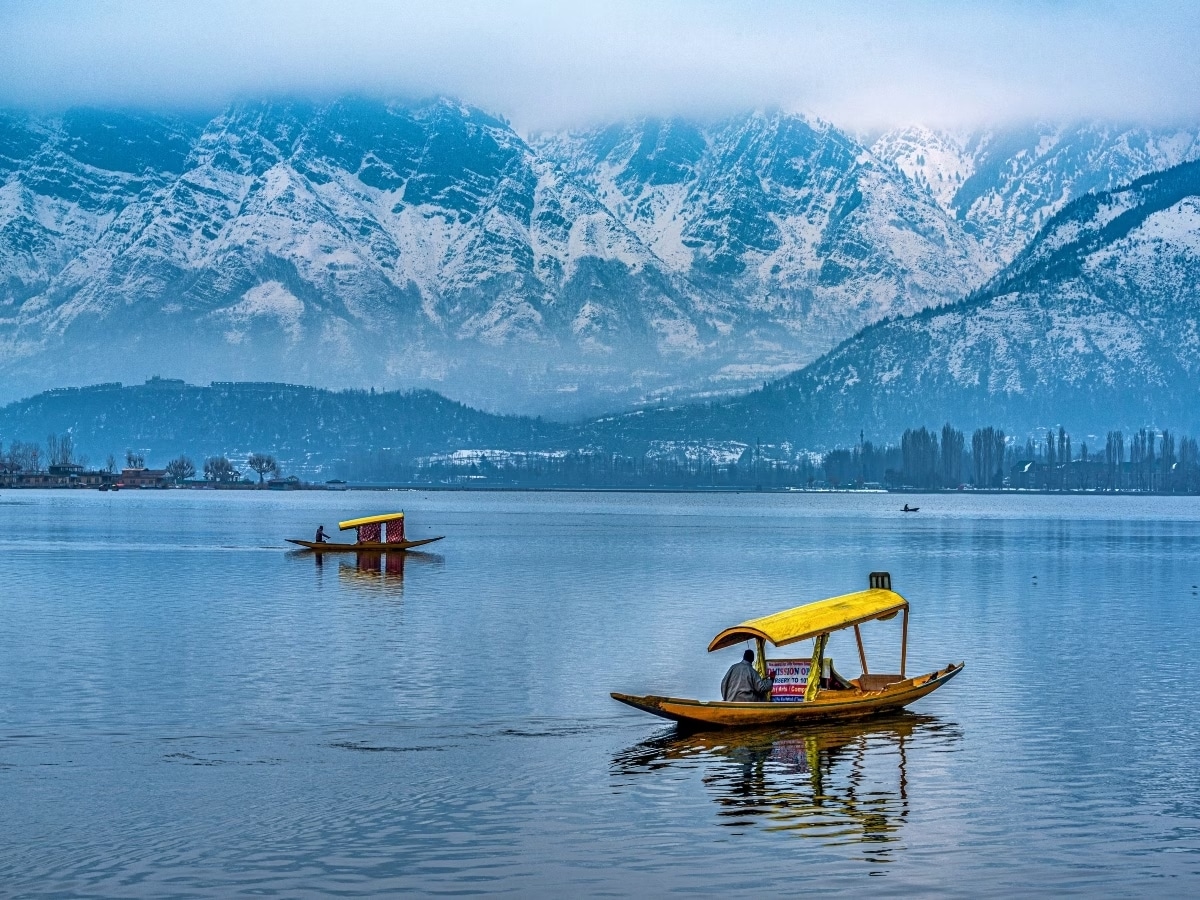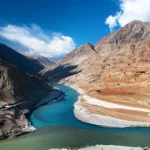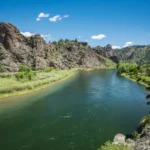
Nestled in the picturesque Kashmir Valley, Dal Lake stands as a jewel among the natural wonders of India. Steeped in history and surrounded by the majestic Himalayas, this serene water body has captured the imaginations of visitors for centuries. With its floating gardens, iconic houseboats, and a rich tapestry of cultural and religious landmarks, Dal Lake is not just a geographical feature but a living canvas that reflects the beauty and resilience of the Kashmiri way of life. Join us on a journey as we explore 25 fascinating historical facts and numerical trivia, delving into the depths of Dal Lake’s allure, from its Mughal origins to its present-day status as a cherished destination for travelers seeking tranquility and cultural richness.
Formation Date: Dal Lake, nestled in the heart of the Kashmir Valley, is believed to have originated around 300 years ago during the Mughal era. The creation of the lake is attributed to the vision of the Mughal Emperor Jehangir, who was captivated by the breathtaking beauty of the region. Under his orders, the area was transformed into a pristine water body, surrounded by lush greenery and the majestic Himalayas, leaving behind a historical legacy that continues to draw visitors to this day.
Size: Covering an average area of around 18 square kilometers, Dal Lake stands as a significant geographical feature in Srinagar. The lake’s size can fluctuate due to factors such as precipitation and snowmelt, contributing to the dynamic nature of this iconic waterway. Its expansive surface area provides a canvas for a myriad of activities, from leisurely boat rides to vibrant floating markets, making it a central hub for both locals and tourists alike.
Depth: Dal Lake boasts a maximum recorded depth of approximately 6 meters, adding to its allure and giving it a sense of depth that mirrors the rich cultural and historical layers of the Kashmir region. This depth supports a diverse ecosystem, including various fish species, further enhancing the lake’s ecological significance.
Islands: Among the picturesque islands dotting Dal Lake, Char Chinar stands out as a symbol of natural beauty. This island, adorned with four majestic chinar trees, serves as a tranquil oasis amid the shimmering waters. Each tree, believed to be over 400 years old, adds an air of timeless elegance to the lake, creating a serene environment that resonates with the history of the Mughal gardens that once graced its shores.
Shoreline Length: The undulating shoreline of Dal Lake stretches over 15.5 kilometers, forming a border between the vibrant city of Srinagar and the serene waters. This extensive perimeter provides ample space for the development of lush Mughal gardens, vibrant marketplaces, and charming houseboat communities that contribute to the cultural richness of the region.
Floating Gardens: Floating gardens, known as “Rad” or “Radew,” cover an area of approximately 2.5 square kilometers on Dal Lake. These unique gardens are constructed on a base of floating vegetation, primarily consisting of matted vegetation and soil. Locals ingeniously cultivate vegetables and flowers on these floating platforms, showcasing a sustainable and traditional agricultural practice that has thrived for centuries.
Floating Market: Dal Lake is renowned for its bustling floating market, a vibrant spectacle where local vendors ply their trade from intricately designed boats. Laden with fresh produce, handicrafts, and a myriad of goods, these floating shops create a kaleidoscopic scene on the lake’s surface. The market serves as a testament to the resourcefulness and adaptability of the local community, fostering a unique economic and cultural exchange.
Temperature: The average water temperature of Dal Lake fluctuates between 11°C to 17°C, creating a temperate environment that adds to the overall charm of the region. This moderate temperature allows for comfortable boat rides throughout the year, attracting visitors who seek a tranquil escape amidst the natural beauty of Kashmir.
Mughal Gardens: Dal Lake is adorned with the enchanting presence of Mughal gardens, including Shalimar Bagh, Nishat Bagh, and Chashme Shahi. These meticulously designed gardens, built during the Mughal era, offer a captivating blend of Persian, Islamic, and Indian architectural styles. They stand as a testament to the Mughal emperors’ appreciation for aesthetics and their desire to create paradisiacal landscapes that harmonize with the surrounding natural beauty.
Houseboats: Dal Lake is synonymous with houseboats, and over 1,000 of these floating dwellings grace its waters. These intricately carved and decorated houseboats provide a unique and immersive experience, allowing visitors to stay amidst the serenity of the lake. Each houseboat is a floating masterpiece, often adorned with traditional Kashmiri woodwork and furnishings, offering a glimpse into the rich cultural heritage of the region. The houseboat experience has become an integral part of the Kashmiri hospitality, attracting tourists seeking a memorable and tranquil retreat.
Water Area: Dal Lake encompasses an open water area of around 7.5 square kilometers. This expanse of open water is vital for the lake’s ecology, providing a habitat for various aquatic species and ensuring a balance between the floating gardens, houseboats, and the natural environment. It serves as a recreational space for activities such as boating, fishing, and birdwatching, contributing to the overall charm and versatility of Dal Lake.
Human Settlements: Scattered across Dal Lake are several floating villages, locally known as “Rahs.” These unique settlements are home to a resilient community that has adapted to a life on the water. The Rahs feature houses built on floating platforms, and the inhabitants rely on boats for transportation, creating a distinctive way of life that reflects the harmony between human settlement and nature.
Bird Sanctuary: Dal Lake serves as a haven for a variety of migratory and local bird species. Kingfishers, herons, and other avian residents find refuge in the lake’s diverse ecosystem. The presence of a bird sanctuary enhances the ecological importance of Dal Lake, making it a destination not only for human admirers but also for avid birdwatchers and nature enthusiasts.
Hazratbal Shrine: Nestled on the northern shores of Dal Lake, the Hazratbal Shrine holds immense cultural and religious significance. The pristine white marble structure houses a revered relic believed to be the hair of Prophet Muhammad. Pilgrims and tourists alike visit this sacred site, adding a spiritual dimension to the lake’s cultural landscape.
Water Channels: Dal Lake is intricately connected to other lakes and water bodies through a network of channels and canals. These water channels not only facilitate transportation but also play a crucial role in maintaining the water levels and ecological balance of the lake. The interconnected waterways create a complex yet fascinating labyrinth that adds to the charm of the region.
Boat Races: Traditional boat races, known as “Shikara races,” bring a sense of excitement and festivity to Dal Lake. Locals and tourists gather to witness skilled boatmen navigate their colorful Shikaras in friendly competitions. These races, often held during festivals and special events, showcase the cultural vibrancy and competitive spirit of the community.
Dal Gate: Serving as the iconic entrance to Dal Lake, the Dal Gate is a historic structure that welcomes visitors to the enchanting waters. The gate stands as a symbol of the lake’s accessibility and its role as a gateway to the cultural and natural wonders that unfold within its boundaries.
Shikara Rides: One of the quintessential experiences on Dal Lake is a Shikara ride. Tourists are treated to a leisurely journey on these handcrafted wooden boats, adorned with vibrant colors and intricate designs. Negotiating with the friendly boatmen for the best rates adds a personalized touch to the experience, creating lasting memories for visitors exploring the lake’s beauty.
Fishing: Dal Lake supports a variety of fish species, and fishing is a common activity for the local population. The lake’s waters are home to carp, trout, and other freshwater fish, providing a livelihood for fishermen while contributing to the culinary richness of the region.
Water Quality: Efforts to improve the water quality of Dal Lake have been ongoing to address challenges such as pollution and weed growth. Conservation initiatives aim to strike a balance between preserving the lake’s ecological integrity and ensuring sustainable use. Monitoring and water quality management plans underscore the commitment to safeguarding this natural treasure for future generations.
Ice Cover: During the winter months, Dal Lake transforms into a winter wonderland as parts of the lake freeze due to the cold temperatures. The freezing of the lake’s surface creates a mesmerizing scene, with snow-capped mountains providing a picturesque backdrop. This seasonal occurrence adds a unique dimension to the beauty of Dal Lake, attracting visitors eager to witness the serene charm of the frozen landscape.
Dal Lake Festival: An annual cultural extravaganza, the Dal Lake Festival showcases the rich heritage and traditions of the Kashmir region. This vibrant celebration features traditional music, dance, handicraft displays, and boat races, drawing locals and tourists alike. The festival serves as a platform to promote and preserve the cultural identity of the Kashmiri people while fostering a sense of community and pride in their artistic expressions.
Dal Lake Conservation Plan: Recognizing the importance of preserving Dal Lake’s ecological balance, various conservation initiatives have been implemented. The Dal Lake Conservation Plan focuses on sustainable development, pollution control, and weed management. The collaborative efforts of environmental agencies, local communities, and government bodies aim to ensure the long-term health and sustainability of this vital water body.
Water Hyacinth Issue: Dal Lake has faced challenges with the rapid growth of water hyacinth, an invasive aquatic plant. The proliferation of water hyacinth has posed threats to the lake’s ecosystem by hindering water flow, reducing oxygen levels, and impacting biodiversity. Ongoing efforts to manage and control the spread of water hyacinth involve innovative solutions such as manual removal, biological control methods, and public awareness campaigns.
Tourist Footfall: Dal Lake attracts millions of tourists annually, contributing significantly to the local economy and the tourism industry in the region. The influx of visitors sustains a thriving hospitality sector, including houseboats, hotels, and local businesses around the lake. The economic impact extends to the broader community, supporting livelihoods and creating a symbiotic relationship between the natural beauty of Dal Lake and the tourism it inspires. This delicate balance underscores the importance of responsible tourism practices to ensure the continued preservation of this cultural and ecological gem.









